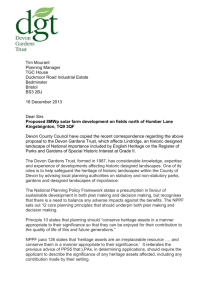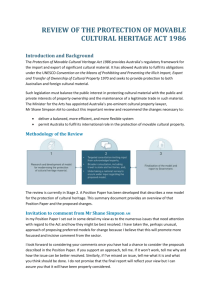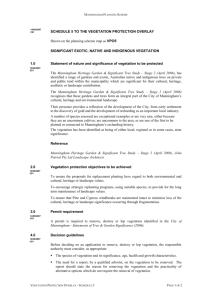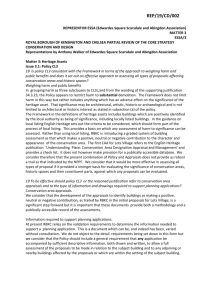Short Form Landscape Assessment Guidelines (DOCX 1.5 MB)
advertisement
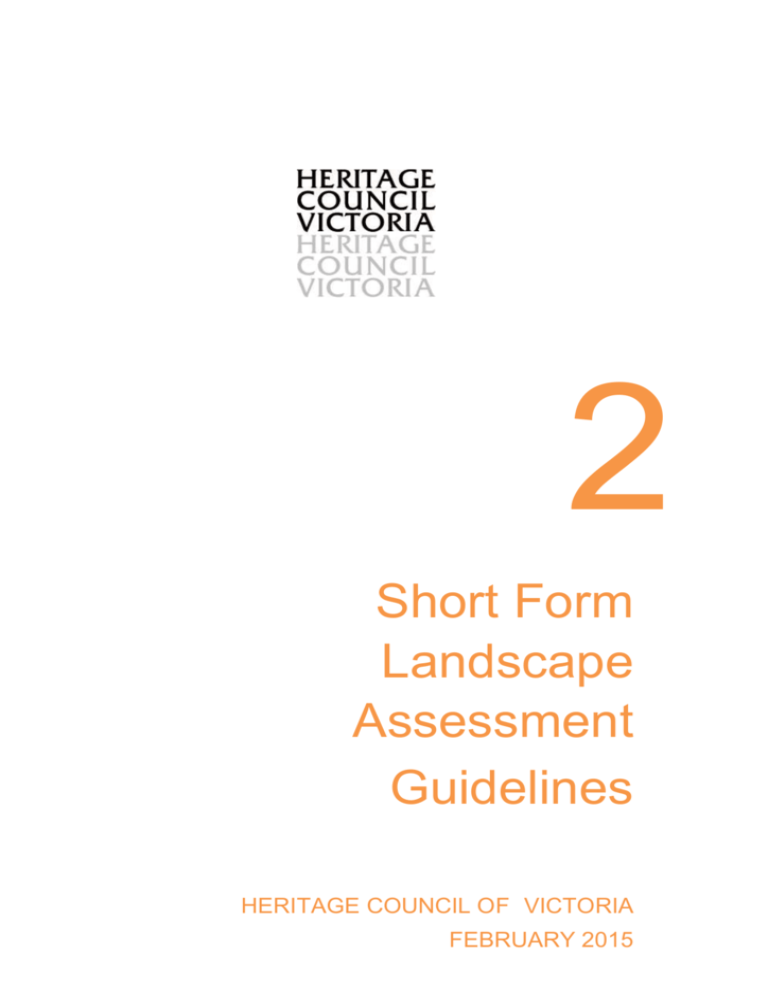
2 Short Form Landscape Assessment Guidelines HERITAGE COUNCIL OF VICTORIA FEBRUARY 2015 STAGE 1 UNDERSTAND THE CULTURAL HERITAGE VALUES OF THE LANDSCAPE 1.1 Define Objectives Consider your needs and intentions. How will the material be used? Do you intend to nominate a place to the VHR? Do you intend to contribute into a strategic planning exercise? etc 1.2 Identify the Area of Interest & Key Stakeholders Identify a study area, physically and conceptually, and broadly enough to cover the themes that are likely to be important, but not so big as to dilute the focus of the investigation. Draw up a preliminary list of stakeholders 1.3 Collate Information & Describe the Physical Characteristics of the Area Investigate and describe the climate, topography, hydrology, soils and vegetation of the study area, to provide a context for exploring the ways in which people have responded to, used and modified the environment. 1.4 Prepare Maps, Aerial Photos (optional) 1.5 Undertake Desktop Survey Local planning schemes Local histories, historical society records and oral history recordings, old maps, early parish plans, photographs, paintings or sketches Google searches, websites of local historical societies or other interest groups, and tourism sites. 1.6 Engage Communities of Interest 1.7 Identify the Major Phases of Human Interaction with the Area Explore how and why has the landscape has been used and changed (or deliberately not changed) over time. 1.8 Correlate the Physical Evidence with the Documentation Link the existing physical features with the processes that have created them. 1.9 Talk to the Communities Interested in the Area STAGE 2: ASSESS THE CULTURAL HERITAGE VALUES OF THE LANDSCAPE. 2.1 Define What is Important and to Whom Prepare a statement of values, setting out the cultural heritage values represented in the landscape; who holds these values; and how important they are to the groups involved. 2.2 Refine Area & Documentation Define a boundary that includes all of the elements of significance, is meaningful and legible. 2.3 Identify Type & Level of Significance Compare the landscape with other places that possess similar features or values. Use the detailed criteria have been developed to assess the cultural heritage significance of places proposed for listing on the Victorian Heritage Register. 2.4 Prepare Statement of Significance Describe how and why the landscape is of cultural heritage significance and at what level. This should include a description and a succinct summary of the description and history of the place, identify the nature, type and level of its heritage significance and explain how the place demonstrates this significance. 2.5 Identify Appropriate Recognition/Protection Mechanisms The protection and management of landscapes of State or local cultural heritage significance may occur through local planning schemes, specifically planning scheme overlays including the Heritage Overlay, Significant Landscape Overlay, Environmental Significance Overlay and/or the Vegetation Protection Overlay (or a combination of these). Landscapes of particular State significance may be included on the Victorian Heritage Register.





